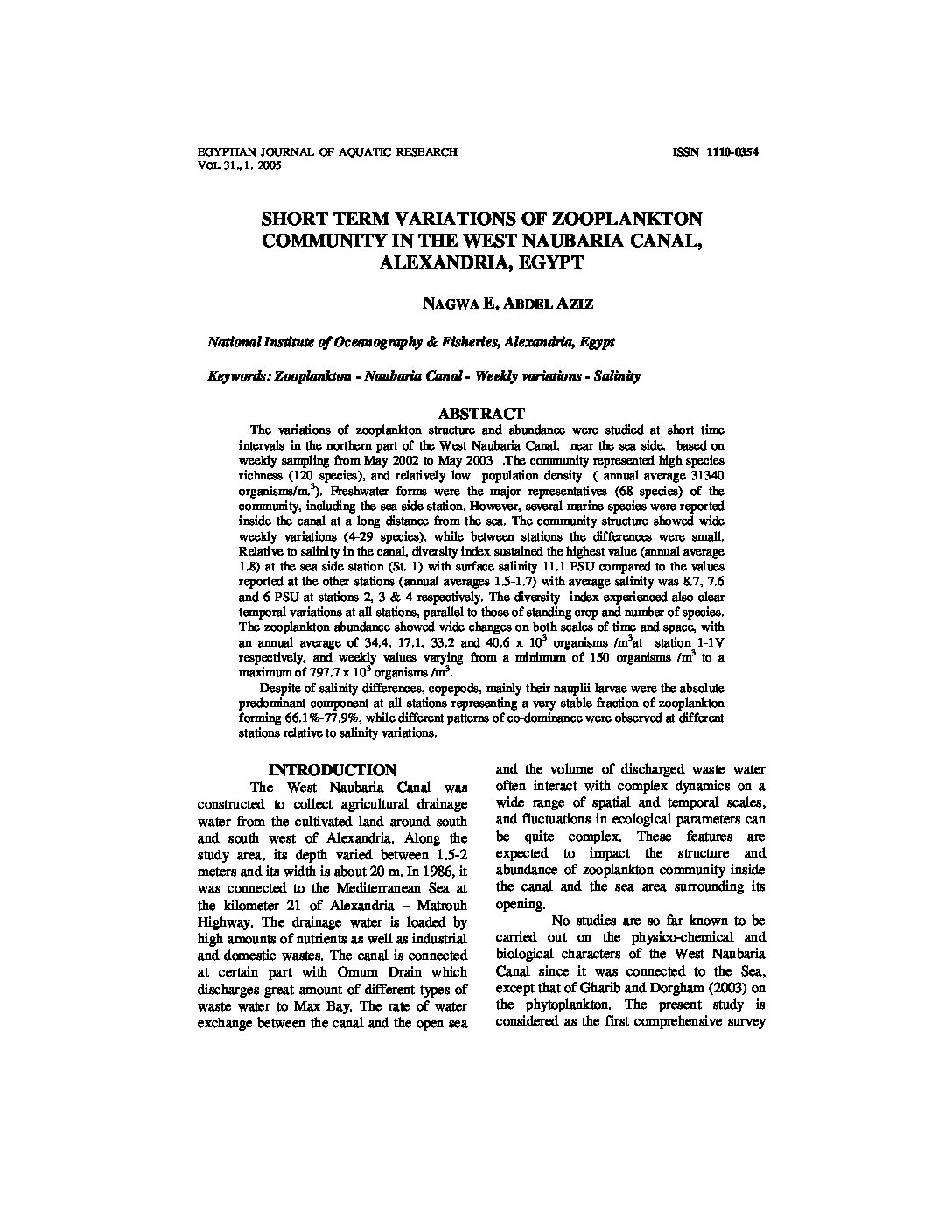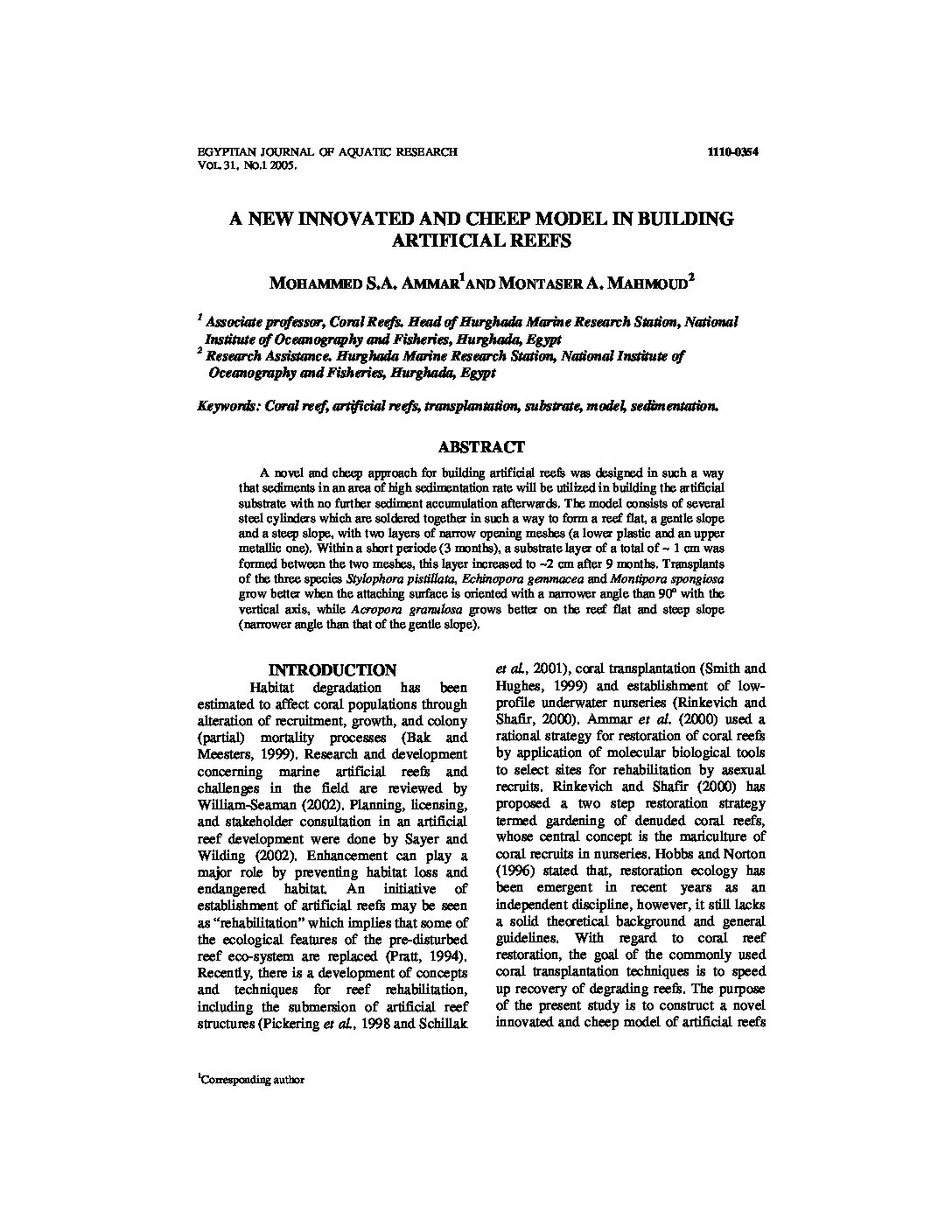Categories
vol-31SHORT TERM VARIATIONS OF ZOOPLANKTON
COMMUNITY IN THE WEST NAUBARIA CANAL,
ALEXANDRIA, EGYPT
NAGWA E. ABDEL AZIZ
National Institute of Oceanography & Fisheries, Alexandria, Egypt
Keywords: Zooplankton – Naubaria Canal – Weekly variations – Salinity
ABSTRACT
The variations of zooplankton structure and abundance were studied at short time
intervals in the northern part of the West Naubaria Canal, near the sea side, based on
weekly sampling from May 2002 to May 2003 .The community represented high species
richness (120 species), and relatively low population density ( annual average 31340
organisms/m.
3
). Freshwater forms were the major representatives (68 species) of the
community, including the sea side station. However, several marine species were reported
inside the canal at a long distance from the sea. The community structure showed wide
weekly variations (4-29 species), while between stations the differences were small.
Relative to salinity in the canal, diversity index sustained the highest value (annual average
1.8) at the sea side station (St. 1) with surface salinity 11.1 PSU compared to the values
reported at the other stations (annual averages 1.5-1.7) with average salinity was 8.7, 7.6
and 6 PSU at stations 2, 3 & 4 respectively. The diversity index experienced also clear
temporal variations at all stations, parallel to those of standing crop and number of species.
The zooplankton abundance showed wide changes on both scales of time and space, with
an annual average of 34.4, 17.1, 33.2 and 40.6 x 10
3
organisms /m
3
at station 1-1V
respectively, and weekly values varying from a minimum of 150 organisms /m
3
to a
maximum of 797.7 x 10
3
organisms /m
3
.
Despite of salinity differences, copepods, mainly their nauplii larvae were the absolute
predominant component at all stations representing a very stable fraction of zooplankton
forming 66.1%-77.9%, while different patterns of co-dominance were observed at different
stations relative to salinity variations.







